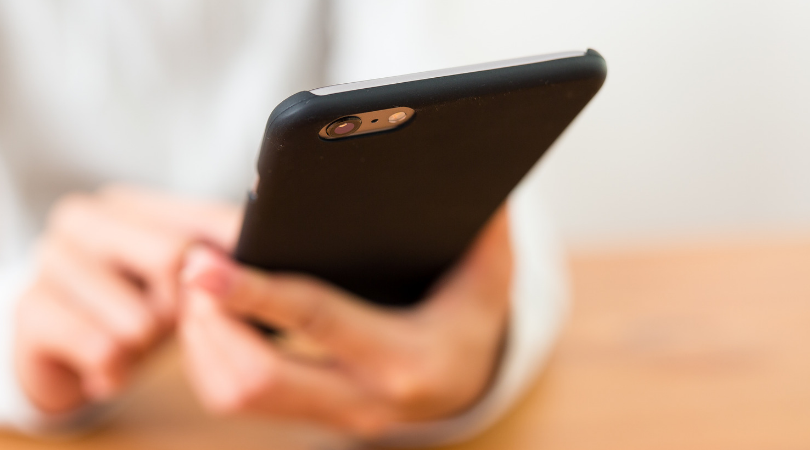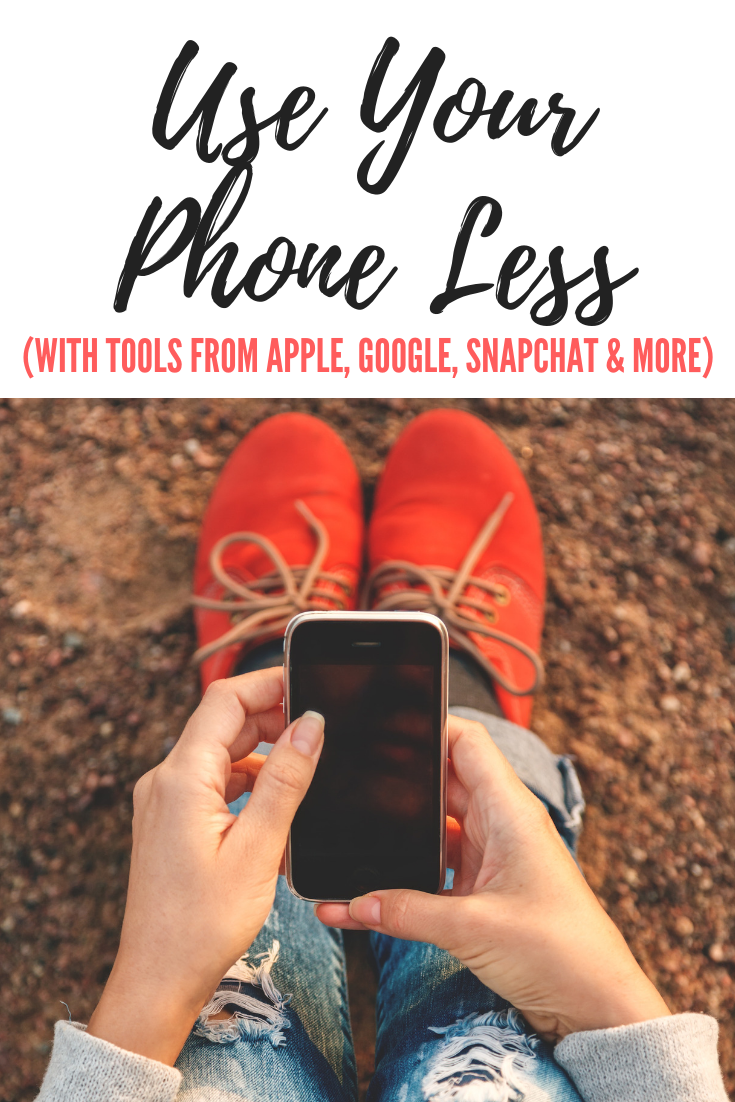Use Your Phone Less (with Tools from Apple, Google, Snapchat and More)

It doesn’t have to be this way. A new wave of so-called “digital wellness” features designed to prevent screen overload is taking hold in some of the most popular tech tools. From operating systems including Apple’s iOS 12 and Google’s upcoming Android Pie update to social media like Snapchat and Instagram, you can see exactly how much time you’re spending online, set limits for yourself and your kids, and reduce distractions and interruptions from notifications.
You have the right to remain skeptical. The idea of tech companies trying to help us stay off their products — after using every trick in the book to keep us hooked — is pretty ironic. And there’s no proof that digital wellness features work — much less help mental health issues associated with technology use, such as anxiety, depression, and addiction. But if you’re concerned about your tech use, as well as about your kid’s, they’re certainly worth trying. Whether they help depends a lot on your family’s needs, your kids’ willingness to be on board, and the kinds of conversations you have around self-regulation. Take a look at some of the most popular platforms’ efforts to protect your digital well-being.
iOS 12
 Screen Time. You can enable Screen Time on your kid’s phone and password-protect the settings so they can’t change them. Or, you can also manage the settings remotely by setting up Family Sharing. We recommend using the features together with your kid. Work on using screens intentionally and mindfully, and help your kid learn to regulate their own use when you’re not around to do it for them. Key features:
Screen Time. You can enable Screen Time on your kid’s phone and password-protect the settings so they can’t change them. Or, you can also manage the settings remotely by setting up Family Sharing. We recommend using the features together with your kid. Work on using screens intentionally and mindfully, and help your kid learn to regulate their own use when you’re not around to do it for them. Key features:
- Usage report. A daily and weekly readout of the time you’re spending on your device. You can see exactly how much attention you and your kids pay to app categories such as social networking versus, say, reading and reference.
- Downtime. Turns the phone off during a specific period of time — for example, 9 p.m. to 8 a.m.
- App Limits. Sets daily time limits for app categories such as games and entertainment as well as for individual apps.
- Always Allowed. Lets you choose which apps (for example, music apps) that never turn off — even during downtime.
- Content & Privacy Restrictions. Controls what your kids can see (such as mature content) and do (such as download and delete apps). Also puts limits on how much information third parties can access about your kid.
Android Pie (available now on Pixel devices; rolling out to other users)
 Digital Wellbeing. Unlike the Screen Time features in iOS 12, you can’t enable Digital Wellbeing settings on your kid’s phone and password-protect them. Instead, Digital Wellbeing is designed for individual users to customize their devices to their own needs. If you’re an Android family, you can discuss and try various features to make the phone work for you — instead of the other way around. (If you want to have more control over your kid’s Android phone, check out Google’s Family Link parental-control app, which allows remote monitoring.) Key features:
Digital Wellbeing. Unlike the Screen Time features in iOS 12, you can’t enable Digital Wellbeing settings on your kid’s phone and password-protect them. Instead, Digital Wellbeing is designed for individual users to customize their devices to their own needs. If you’re an Android family, you can discuss and try various features to make the phone work for you — instead of the other way around. (If you want to have more control over your kid’s Android phone, check out Google’s Family Link parental-control app, which allows remote monitoring.) Key features:
- Dashboard. Graphs the time you’ve spent in individual apps and lets you set daily time limits for apps that keep you hooked longer than you’d like (for example, 15 minutes tops on Snapchat).
- Do Not Disturb. Silences your device entirely or allows you to specify which alerts you want to see (or not).
- Notifications. Personalizes your alerts, so you can snooze them and schedule them at a convenient time.
- Wind Down. Automatically turns your phone grayscale and enables Do Not Disturb at a time you specify.
YouTube
 Account Settings. One of the most popular platforms for kids and adults, YouTube is easy to get lost in — or it used to be, anyway. Now you can see a full rundown of how much time you and your kids spend scrolling through videos, and if you think you’re overdoing it, you can enable settings to curb your use. You can’t password-protect the settings, though, so they’re mostly helpful for you if you let your kids use your phone or if you help your kid set them so they can regulate their own use. Key features:
Account Settings. One of the most popular platforms for kids and adults, YouTube is easy to get lost in — or it used to be, anyway. Now you can see a full rundown of how much time you and your kids spend scrolling through videos, and if you think you’re overdoing it, you can enable settings to curb your use. You can’t password-protect the settings, though, so they’re mostly helpful for you if you let your kids use your phone or if you help your kid set them so they can regulate their own use. Key features:
- Time Watched. Available only on the app, these stats show how much time you’ve spent watching videos for the present day, the day before, and the past week. Within this feature, you can also set a reminder to take a break after a certain amount of time and disable autoplay so you won’t get sucked in to watching endless videos.
- Scheduled digest. Instead of random notifications about the latest video that distracts you at all hours, you can get all your alerts bundled together at one time.
- Disable sounds & vibrations. If you can’t see or hear your alerts, you’ll stay blissfully engaged in important stuff (such as talking with your kids) until you check your phone.
- Restricted Mode. Though it’s been around for a while, Restricted Mode can be a helpful additional setting to give you some peace of mind. It limits mature content from showing up in your kid’s feed (it’s not perfect, though).
Instagram (available soon)
 Digital Wellbeing. Running neck and neck with Snapchat as the most popular social media app among teens, Instagram is a key social lifeline. Its parent company (Facebook) has made an effort to help users manage their time and reduce exposure to cyberbullying by adding settings such as Comment Controls, which allow you to micromanage your friends’ replies, and All Caught Up, which lets you know you’ve seen every post since the last time you scrolled through your feed. Digital Wellbeing, which will roll out soon, will add even more functionality. You can check back for updates after the new version is released. Key features:
Digital Wellbeing. Running neck and neck with Snapchat as the most popular social media app among teens, Instagram is a key social lifeline. Its parent company (Facebook) has made an effort to help users manage their time and reduce exposure to cyberbullying by adding settings such as Comment Controls, which allow you to micromanage your friends’ replies, and All Caught Up, which lets you know you’ve seen every post since the last time you scrolled through your feed. Digital Wellbeing, which will roll out soon, will add even more functionality. You can check back for updates after the new version is released. Key features:
- Activity Dashboard. Displays a daily average of the time you’ve spent on the app for the week.
- Daily Reminder. Allows you to set a time limit and receive a notification when you’ve hit your limit.
- Mute Push Notifications. Silences push notifications (you can also turn them off entirely in the app’s settings or on your phone’s settings).
Snapchat
 Do Not Disturb. The pioneer of the disappearing message, Snapchat is now a full-fledged portal to friends, videos from around the world, current events, and much more. Needless to say, it can take up a lot of time. But you can cut down on the noise — a little bit. Key features:
Do Not Disturb. The pioneer of the disappearing message, Snapchat is now a full-fledged portal to friends, videos from around the world, current events, and much more. Needless to say, it can take up a lot of time. But you can cut down on the noise — a little bit. Key features:
- Do Not Disturb. Instead of disabling the phone or the app altogether, Snapchat lets you mute notifications from individual people. If you have a chronic oversharer on your friends list, you don’t have to block or remove them. Just “shush” them for a while and you won’t be alerted to their posts.
- Mute story. Muting a story pushes the friend down your contacts list, effectively making their posts the last in line.
TikTok – Real Short Videos
 Digital Wellbeing. TikTok serves up endlessly scrollable 15-second videos from people all over the world. Averaging 13 million video uploads per day, the app could certainly eat up a lot of your kid’s time. You can password-protect the Digital Wellbeing features on your kid’s phone so they can’t change them. Key features:
Digital Wellbeing. TikTok serves up endlessly scrollable 15-second videos from people all over the world. Averaging 13 million video uploads per day, the app could certainly eat up a lot of your kid’s time. You can password-protect the Digital Wellbeing features on your kid’s phone so they can’t change them. Key features:
- Screen Time Management. Sets a two-hour daily viewing time limit. (The time limit isn’t customizable.)
- Restricted Mode. Filters out videos that may not be age-appropriate.
Facebook (currently in development)
 Your Time on Facebook. Though research shows teens prefer Snapchat and Instagram to Facebook, you’re probably on it more than you would like. The company is rumored to be creating some options to help you keep track of the time you spend on the platform, which in theory should help you cut down. You can check back for updates after the new version is released. Key features:
Your Time on Facebook. Though research shows teens prefer Snapchat and Instagram to Facebook, you’re probably on it more than you would like. The company is rumored to be creating some options to help you keep track of the time you spend on the platform, which in theory should help you cut down. You can check back for updates after the new version is released. Key features:
- Time on Facebook. Displays a daily average of the time you’ve spent on the app for the week.
- Manage Your Time. Allows you to set a time limit and receive a notification when you’ve hit your limit.
- Mute Push Notifications. Silences push notifications (you can also turn them off entirely in the app’s settings or on your phone’s settings) or choose which alerts you want to get.







